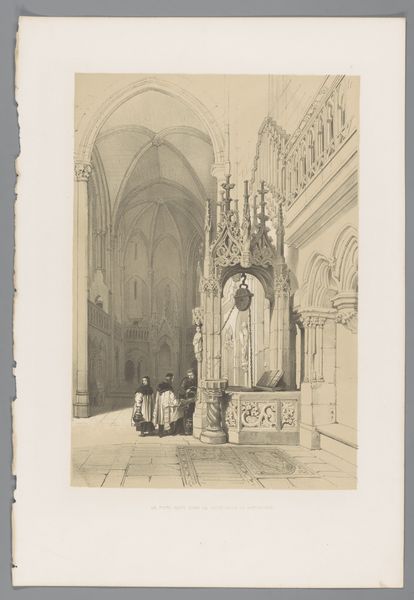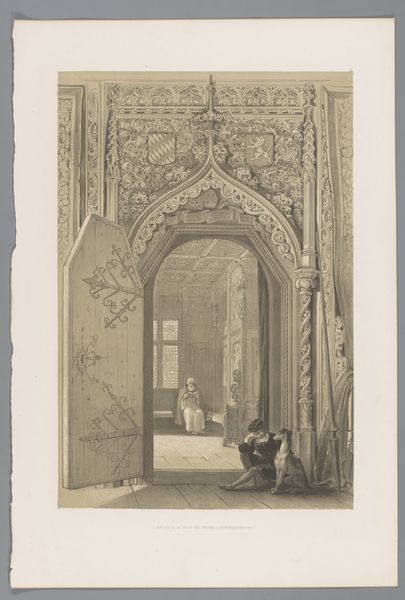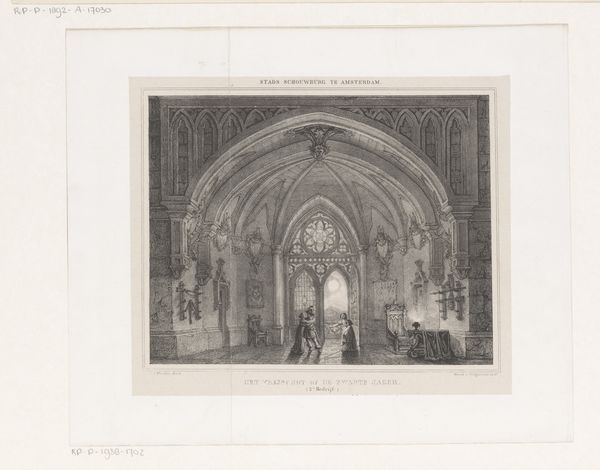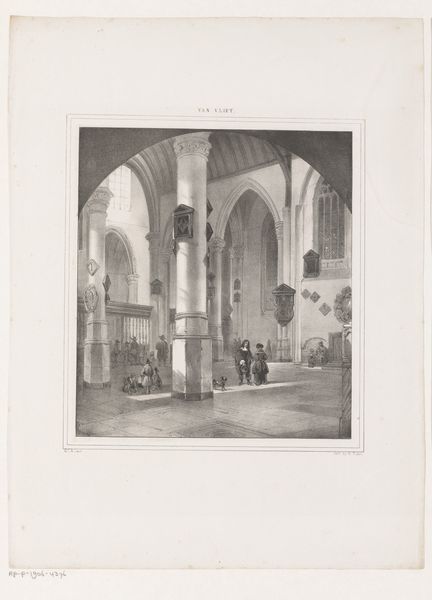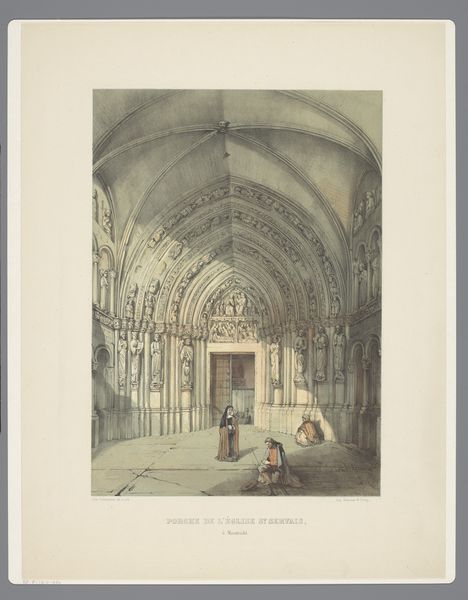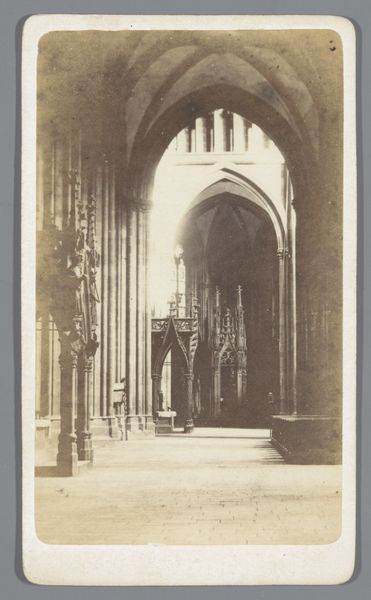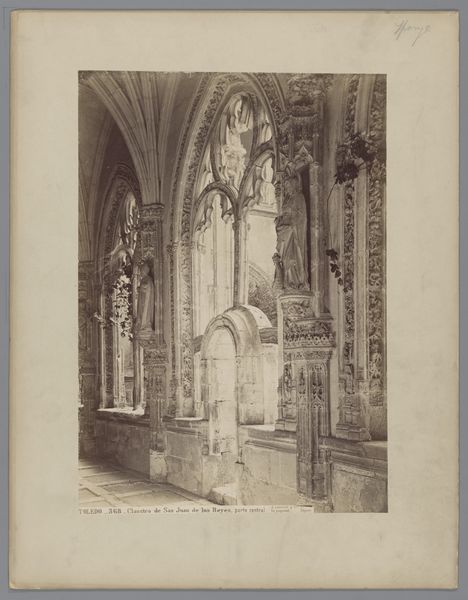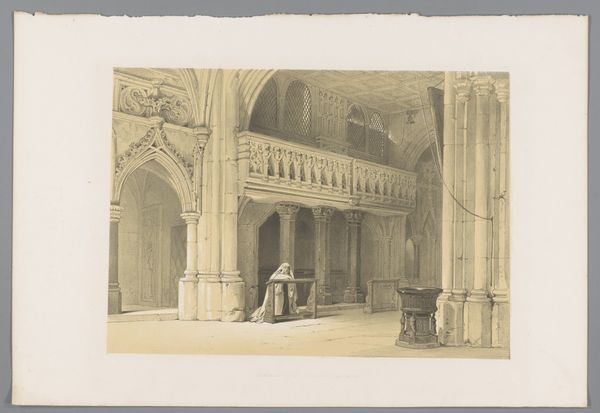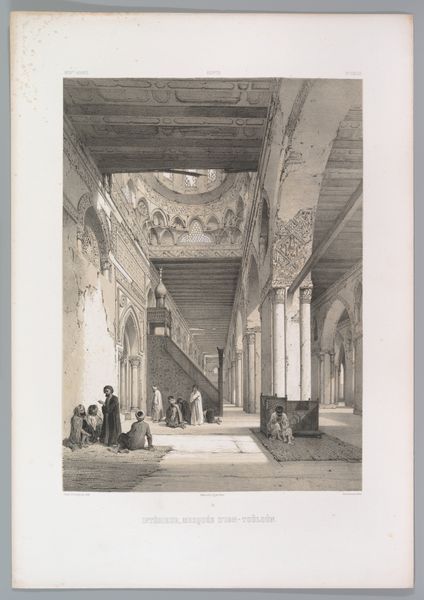
drawing, print, paper, ink, engraving
#
drawing
#
narrative-art
# print
#
landscape
#
paper
#
ink
#
romanticism
#
cityscape
#
genre-painting
#
engraving
Dimensions: height 542 mm, width 371 mm
Copyright: Rijks Museum: Open Domain
Curator: This is Louis Haghe’s "Portaal van de Onze-Lieve-Vrouwekerk te Neurenberg," created in 1845, housed right here at the Rijksmuseum. The lithograph showcases the facade of the Church of Our Lady in Nuremberg. Editor: Initially, I’m struck by the sheer textural complexity Haghe achieves. Look at the profusion of details: statuary, arches, carvings; everything crafted in minute detail in ink on paper. Curator: Haghe really demonstrates his proficiency in printmaking here. Observe how he orchestrates the light and shadow—a vital compositional element guiding our vision into the deep interior space. He is clearly a master of tonal variation. Editor: Absolutely, it's an exquisite lithograph. The contrast really makes one think about the division of labor needed to bring a medieval church into existence and later translate this magnificent monument onto paper using traditional drawing tools. How long do you think it took? Curator: The emphasis on architecture here seems central to a Romantic sensibility, underscoring an interest in a past that inspired awe. Note the figures included are small in scale, dwarfed by the magnificent church; this reinforces our feeling of the sublime. Editor: Yes, and you can't dismiss how people are integrated in it. Haghe masterfully shows how a place of worship becomes an integral element of urban fabric for common people, how it forms and shapes rituals of social activity. It becomes more than mere representation but becomes lived experience. Curator: I concur. We find a dialogue between the timeless architecture and temporal human activities, elevating everyday genre scenes to historical significance. His keen eye for the composition leads to our admiration for Haghe’s technical brilliance. Editor: For me, Haghe’s choice to work in this medium also has material and socio-political weight. Printmaking democratized art and allowed it to spread. As an item produced on paper, this architectural tribute embodies artistic access beyond pure aesthetic reverence. Curator: Thank you. Considering that point of view enriches my reading experience too. The dialogue between historical reverence and accessible art-making certainly gives new insight to how to receive this artwork. Editor: Well, I learned a lot too! Thanks to our shared discussion, I find fresh respect in the visual language that he's employed in that artwork.
Comments
No comments
Be the first to comment and join the conversation on the ultimate creative platform.
